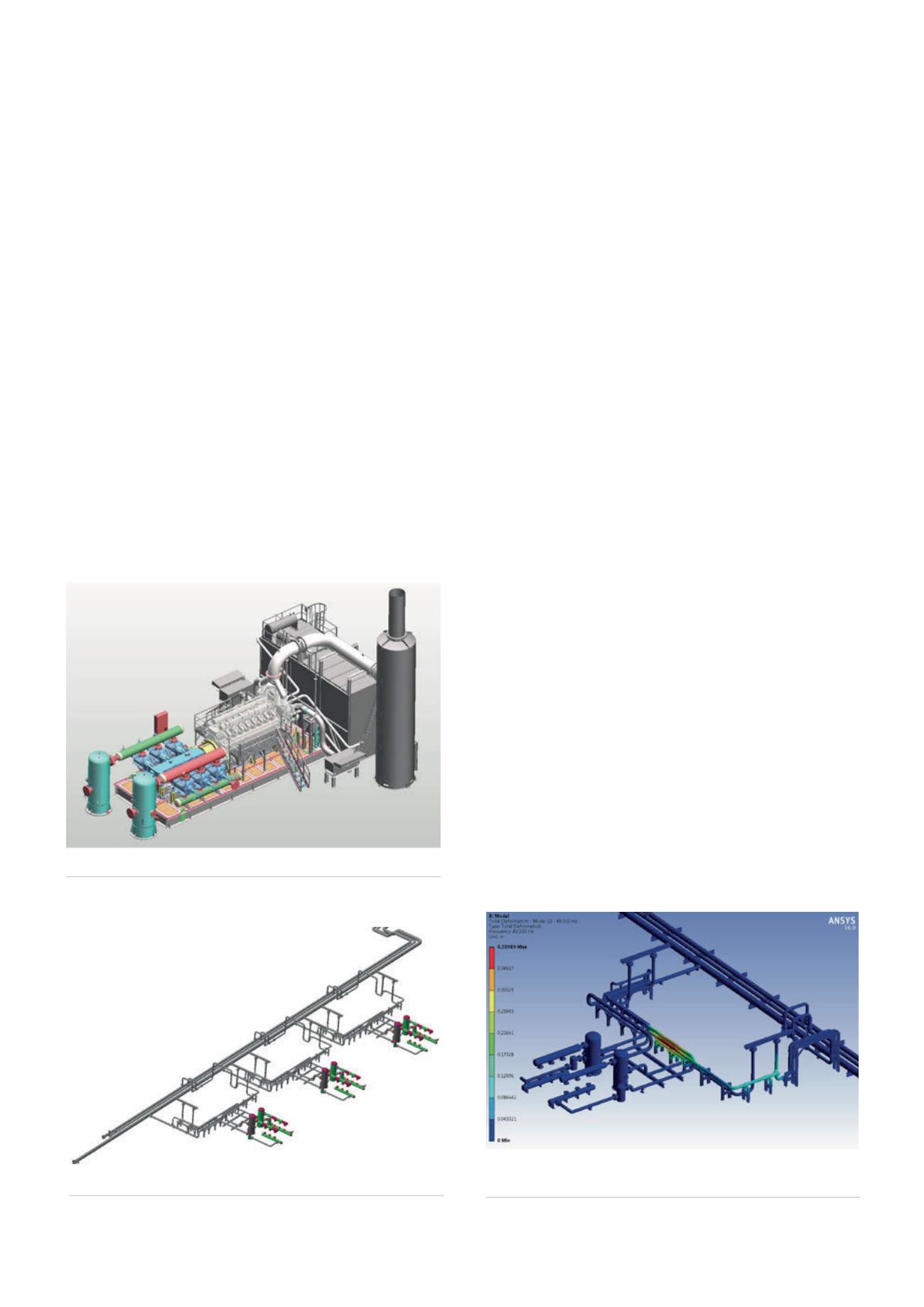
pulsation vessels results in higher first time compressor costs.
Large diameter discharge vessels under the cylinders also raise
the centre of gravity of the compressor frame, resulting in
increased mechanical vibrations. Restriction orifice plates lead
to a permanent pressure drop in the system; a parasitic load the
driver must overcome. In general, a higher pressure drop leads
to higher fuel or electricity costs. If the compressor is designed
to operate at the rated horsepower of the driver, additional
pressure drop results in a loss of flowrate.
While alternative solutions are in development and show
promise for narrow operating windows, SNC-Lavalin is utilising
a unique approach to address the challenges of developing
compressor packages, designed to operate over wide operating
ranges. SNC-Lavalin is combining proven compressor analysis
techniques with design principles that allow flow to be
maximised across a broad operating range while minimising
parasitic load due to pressure loss. This approach helps
optimise operational performance and extends the profitability
of the compression asset over its lifecycle.
Optimising on-skid vessel design
Reciprocating compressors generate pressure pulsations at
harmonic orders of the operating speed. When designing
a compressor for a wide operating range with compressor
demand at or near available horsepower, it is necessary to
use all available options to unload the compressor as needed.
These options often include operating at maximum clearance
settings or single acting the cylinders. These cylinder settings
generate higher pressure pulsations compared to double acting
(cylinder) operations.
The unloading of the compressor results in higher pulsation
at multiple orders of run speed. When restriction orifice plates
are used to control pulsation at those operating conditions, the
higher parasitic loads from the increased pressure losses result
in lower overall efficiency and a reduction in throughput. To
avoid parasitic load due to pressure loss, the on-skid pulsation
(filter) vessels are optimised by conducting an acoustic analysis
of the compressor manifold system. SNC-Lavalin conducts
acoustic analysis to minimise pulsation by optimising the vessel
design through the proper selection of the shell-to-cylinder
nozzle diameter ratio, the inclusion of multiple vessel chambers,
internal dished head placement, and choke tube diameter,
length, and placement. The calculated pulsation and shaking
forces are compared to API 618 (5
th
edition guidelines).
During vessel design optimisation, the impact of vessel sizing
on the mechanical natural frequencies of the manifold system
is also evaluated. If the vessel size is too large, mechanical
resonance of the compressor frame or vessels is a real concern
and if excited, requires costly corrective actions in the field.
Efficient vessel design controls pulsation by using the vessel
geometry to cancel the opposing dynamic pressure waves at
multiple frequencies. If the internals of the pressure vessels are
not placed equidistant from the source of pulsation, the pressure
waves are not cancelled and pulsations enter the piping system.
Hence, pulsation control must be done outside the vessels by
using restriction orifice plates. It is critical to optimise the vessel
design for the entire pressure and the operating speed range.
Case study
In early 2015, a midstream company added a 15 000 bhp
compression facility with an expected throughput of over
490 million ft
3
/d. SNC-Lavalin was contracted to supply
the compression equipment (Figure 1) and a third party EPC
company was contracted for the plant layout and piping
Figure 1.
Compressor unit: on-skid design.
Figure 2.
Plant layout: analysis 3D model.
Figure 3.
Plant off-skid piping analysis with secondary volume
bottles.
54
World Pipelines
/
MARCH 2016


